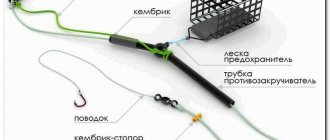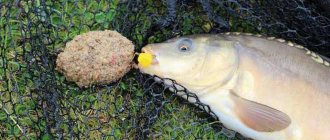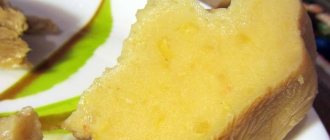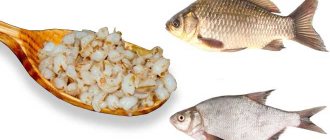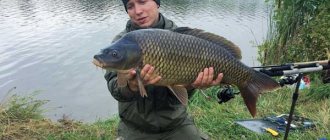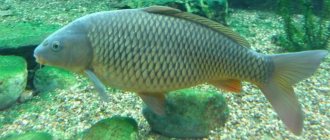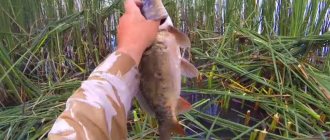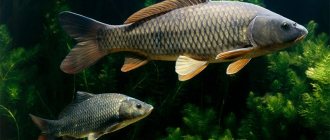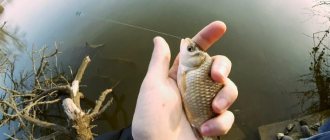Choosing peas for fishing
Nowadays, fishing store shelves are filled with different types of baits and groundbaits, and preparing dry peas is time-consuming. But still, this bait remains popular due to its consistent effectiveness. In order for the nozzle to work as required, you must choose the right raw materials. You cannot cook the first peas you come across; it is important to choose unhusked, whole and homogeneous ones, and not crushed or split into halves
Preparing baits
First, let's start looking at popular recipes for pea toppings. There is a recommendation that every experienced fisherman knows.
Split pea tips
Properly preparing bait from unshelled peas is quite difficult, and at the same time simple. Whole beans with skins allow you to preserve the fruit when placing it on the point of a hook. The pea will remain intact. Cooking procedure:
- Take the required amount of dried coated peas.
- Place it in a colander and rinse under the tap.
- Carefully pour the fruits into an enamel pan. Fill it with water. There should be about 2-3 centimeters between the peas and the water surface.
- Leave for several hours or a day (depending on the characteristics of the beans and the harvest). The peas should swell.
- We will cook peas in the same water. If you think there is not enough liquid, you can add it.
- The question: “How long to cook the contents” cannot be answered unequivocally - you have to find out on your own, because the time also depends on the harvest and variety. Approximately, the cooking process takes 60 minutes.
- Prepare your hook. Use it to check the suitability of the attachments. Once you are satisfied that the peas are suitable for piping, quickly remove the pan from the heat.
Steaming in a thermos with cake and soda
Peas prepared using this method have a pleasant smell and taste. Carp fish readily bite on them even without pre-feeding the area. Cooking:
- We will need a good sealed thermos. Pour boiling water into it.
- Pour soda into a thermos. One level teaspoon is enough.
- Mix the solution, add peas, about 300 grams.
- Add a handful of cake to the resulting mixture and stir.
The peas will steam, do not forget to check their suitability by placing them on the point of the hook (you can use a needle).
Water bath dish
You can steam peas for fishing in a similar way. The recipe is relevant for those fishermen who have a double boiler in their kitchen. To prepare many baits, you must follow the instructions for the corresponding apparatus. In this case, we will do without it.
IMPORTANT! Steaming is much more convenient. This process is easier and faster than boiling the beans. There is less chance of incorrect cooking in steamers - the devices are equipped with an automatic switch, which provides for banal human forgetfulness.
Recipe:
- We prepare the fruits, a double boiler, gauze, a small weight and paper.
- The night before fishing, rinse, soak the beans (directly in the device) and go to bed. Just the right amount of time will pass.
- The next morning the peas will be soaked. Cover it with gauze and place a small weight on top.
- We turn on the device. When the water boils, press the switch off and wait 20 minutes. The peas will steam, you can also add some flavoring.
- We put it on paper and wait for it to cool and dry.
Attention! We select the load taking into account the fact that it will have to be somehow removed from the hot water. It should have a recess (ring, loop) to facilitate the extraction process.
How to cook peas for carp and carp
You can prepare bait in several ways, such as boiling, soaking, fermentation, and steaming. It is permissible to do this in a water bath, in cotton or synthetic bags, or in a slow cooker. The most important thing is that the product acquires the desired softness and the bait can be placed on the hook. It should not be overcooked so that the peas do not lose their integrity.
Important! When purchasing, it is better to choose dry, wrinkled pea grains, because they have a stronger shell that does not burst during cooking.
Fermentation
Some fishermen prefer to hunt carp using fermented peas as bait. To do this, the product must be boiled, and then added to it substances that promote the start of the fermentation process, for example, sugar or plum compote.
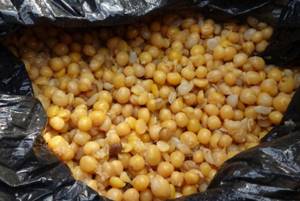
During the fermentation process, foam will appear on the surface of the bait being prepared, which indicates the work of anaerobic bacteria. The fermentation rate will be directly dependent on the heat in the room where the process takes place. At temperatures above +20°C, fermentation will end in 5–7 days.
Soaking in cold water
Any variety of peas needs a long stay in water, which can be used in any form (cold, warm or boiling water). The minimum soaking period is several hours. It would be optimal to do this the evening before fishing and leave it to infuse all night, until the morning preparations before going to the river. Whatever soaking method is chosen, take approximately 3-4 volumes of liquid for each glass of peas . This proportion is due to the fact that the grains swell with moisture, gradually absorbing it.
Did you know? Medieval Japanese peasants bred and raised carp in flooded rice paddies (flooded fields). This breed of fish was first brought to the islands from Persia, after which it quickly spread.
Proper soaking of dry peas for fishing:
- The grains are washed, poured into a pan and cold or warm water is added there at a ratio of 1:3 (or 1:4). If various debris (husks, debris) float to the surface of the liquid, it is recommended to catch it with a slotted spoon.
- The bait remains in this position for 6 to 24 hours.

Using boiling water to soak peas is similar to the procedure above, but with slight modifications to the process. The washed peas are poured with boiling water so that it just covers the grains. The remaining liquid is added after about 5–10 minutes. The advantages of this option include the rapid swelling of the beans; they are ready in about 2 hours.
Steaming with boiling water in a thermos
Steaming allows you to cook peas using an accelerated method. It is most convenient to do this in a thermos. Dry grains are poured into the container, after which they are poured with boiling water in the evening and the lid is tightly closed. In the morning, the bait will have the desired volume and consistency without additional boiling. Before using as a nozzle, the peas are poured onto the fabric.
Did you know? In the ponds of the Chinese emperor, unusual koi carps were grown, which the ruler awarded to distinguished nobles as the highest order. These fish had unusual spotted colors and large bodies.
They are allowed to cool and dry naturally . After this, the bait is poured into a container with a lid so that it does not dry out. When steaming beans in a thermos, it is important to fill the container correctly. Taking into account the fact that after absorbing moisture the grains will increase significantly, no more than 1/3 of the container volume is filled with dry product.
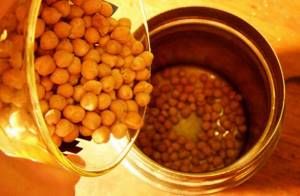
Cooking
The classic way to soften beans is by boiling, during which you need to remember not to use too much water because the beans will crack. It is optimal when the liquid slightly covers the peas (by 1-2 cm) . For the same reason, you should not stir the brew with a spoon. It is better to add boiling water little by little if necessary. You can also add a little salt and sugar to the bait. The softening time depends on the type of pea and whether the crop was grown this year or much earlier.
Video: how to cook peas for carp

Simmer
Before cooking, peas should be soaked in cold water for 24 hours. During this time, the grains will absorb liquid and swell.
Find out the difference between carp and carp.
How to boil:
- The beans are filtered, the cloudy liquid is drained, and then they are filled with warm water so that its level is 2 cm above the surface of the contents of the pan.
- Cover the container with a lid and cook the peas over very low heat.
- During cooking, the liquid level will gradually decrease, so periodically it should be replenished with boiling water. It is undesirable to add water at a low temperature, since cooling will cause the cooking to stop and the peas will harden irreversibly.
- After about three hours of boiling, the beans should become soft. If you add a pinch of baking soda to the water, it will be ready faster. You should check their hardness periodically by simply testing them. As soon as the peas become soft, they are ready to eat. It should be remembered that the product cannot be digested. The best condition is when the grains can be crushed between your fingers, but are not yet separated into halves.
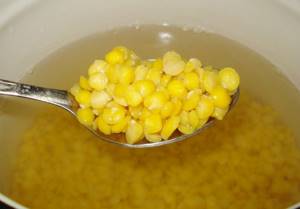
At the request of the fisherman, the pan with cooked beans can be placed in the oven for 15 minutes. Steamed grains stick well to the hook.
In a water bath
This method differs from ordinary boiling only in that the pan with dry grains and water is not placed directly above the fire. It is placed in a slightly larger container filled with water. This can be a wide bowl that is placed on the stove . After the liquid in it boils, the peas will begin to soften. The final readiness of the product is determined in the same way as during traditional cooking.
We advise you to learn how to prepare potatoes for catching carp.
In cotton bags
A good solution is to put the peas in a bag made of natural fabric. An unusual technique will make it possible to cook the bait in more water without fear that the liquid will evaporate and the grains will burn to the bottom of the pan or stick together into one lump.
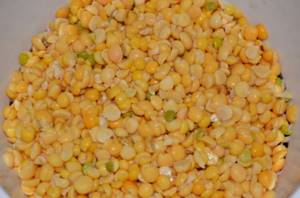
Some fishermen prefer to use nylon women's tights or stockings for these purposes. During boiling in bags, the readiness of the nozzle is determined by crushing the peas with your fingers through the fabric.
In a slow cooker
This device allows you to bring the beans to readiness without any extra effort. They are placed in a multicooker bowl, after which they are filled with water in a ratio of 1:3. Close the device tightly with a lid and set the “Beans” program. The device will notify you about the end of work with a special sound signal . If the water is not completely absorbed, the remaining water can be drained through a colander. Using a multicooker-pressure cooker allows you to halve the cooking time of legumes.
You will be interested to know how to catch carp on the Volga.
How to plant peas
Directly on the hook:
- The first thing you need to do is to find a sprout on a pea that is slightly different in color.
- The point of the hook should be inserted into this sprout.
- The point of the hook should be placed at the very edge of the pea. The ideal option is when you can see the outline of the sting through the pea.
- The end of the sting should definitely not be visible, but try to position it as close to the edge of the pea as possible.
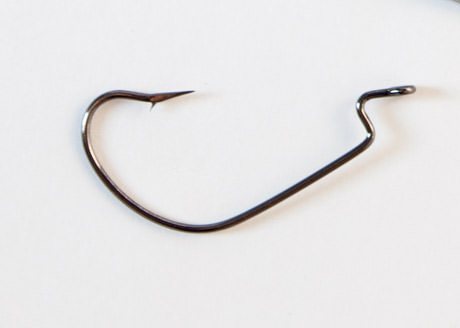
Hair rig:
- Using a small diameter drill, make a hole exactly in the middle of the pea.
- Place the pea on the leash.
- Put a brake on the loop so that the pea does not fly off.
- If desired, you can plant two or three peas.
Features of cooking chickpeas
An additional name for chickpeas is Turkish or lamb peas. The crop is a legume and is most often grown in the Middle East. Its peas have a large diameter (12-13 mm). The algorithm for preparing chickpeas is almost identical to boiling traditional Russian peas, but when soaking, use 1 liter of water for each glass of grains .
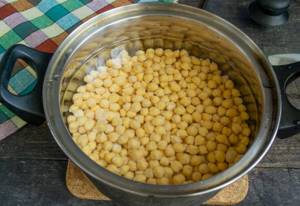
The product will soften within one hour. If the fisherman does not have time and needs to quickly prepare chickpea bait, then add 1 teaspoon of soda to the water. After this, it will be enough to boil the mixture for 15 minutes and get a soft bait.
Peas for carp fishing
We won’t go into history, but note that carp fishing with peas became popular back in the last century. Therefore, over such a long time, thanks to trial and error, anglers have learned which pea baits fish like most. So it is advisable to use the following as a nozzle:
- fresh peas;
- canned green peas;
- boiled or steamed pea grains;
- various porridges - mastyrka (a mixture of peas and semolina), mamalyga (pea cereal + wheat flour) and their variations;
- pea “chatter” (as a rule, made from crushed peas, flour, semolina, cake, etc.).
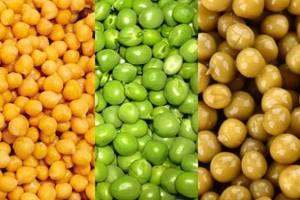
Various peas are suitable for catching carp
However, in any case, when choosing peas for carp fishing, the fisherman needs to consider the following:
- It is best to use only whole, ripe grains without dark spots. Different halves of peas will not work.
- It is advisable not to mix different varieties.
- Make sure that the peas do not have an unpleasant musty smell. This may scare away the fish.
- Peas should not be too soft or hard, whether they are fresh or canned. Ideally, by lightly pressing it with your fingers, it only slightly changes its shape.
- Dry peas may be a little shriveled, because after cooking they will absorb water and become smooth and large.
- If you have the opportunity to use fresh peas, that is, right in the pod, then by all means take advantage of it. The younger it is, the more attractive it is to carp.
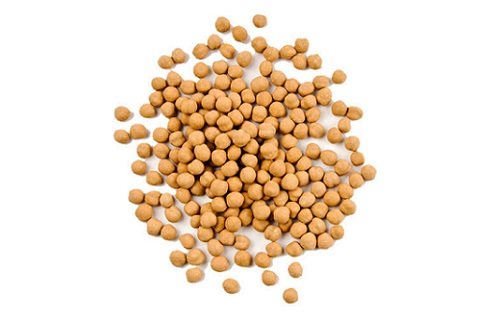
When choosing peas, you should pay attention to the integrity of its grains
Adding Flavors
Since fish have a good sense of smell, hunters try to attract it with various strong odors. Natural and artificial flavors are added to the bait: fruit essences, valerian, unrefined vegetable oils (from sunflower, rapeseed).
Find out how to assemble tackle for carp with a feeder.
Sugar and salt are also often added as flavor enhancers. Among fishermen there are opponents of this method, who believe that the natural taste and smell of peas attracts prey much more strongly.
Cooking peas
In order for your bait to be a tasty morsel for fish, you need to add a little milk or vegetable oil during cooking.
And yet the question remains, what to do with peas that have lost their solid shape and are not suitable for baiting? In this case, experienced fishermen prepare bait or so-called mastyrka.
The peas are brought to a boil in the same water in which they were infused, and when the boiling process occurs, the fire is reduced and cooking occurs until the liquid has completely evaporated.
The result is a homogeneous pea mass, which is brought to the state of puree. To increase the aroma of the bait, use dill, garlic, sugar, natural honey, and also add a drop of hemp or anise oil.
Drying bait and bait
The finished bait is poured onto a cloth, the slide is leveled, and left in this position until it dries a little. After this, the largest and most uncracked peas are selected, the rest will be used for complementary feeding.
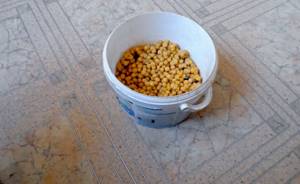
To avoid deformation of the cooked beans during transportation, they are placed in plastic containers with a lid, such as an ice cream tub.
Using peas as bait
Feeding fish with peas should begin with small portions so that the prey does not get full prematurely and lose interest in food. It should be remembered that if fishing is planned at dawn, then the bait will be scattered in the morning. When the fishing takes place in the evening, the complementary food is dropped into the reservoir shortly before. In places where the fish knows bean bait, 3-4 casts of bait are enough to collect prey in the fishing zone.
Important! It is dangerous to spill dry peas into a pond. If large quantities enter the stomach of carp or carp, the dry grains swell and can cause the death of the fish.
Features of catching and feeding carp with peas
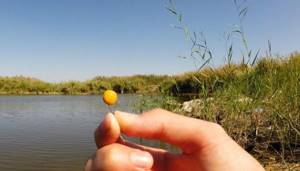
The fish will bite well only if it has previously been “accustomed” to peas, so it is very advisable to feed the bait over a couple of days. You can use your own prepared peas or a store-bought mixture with its addition. For feeding in areas significantly removed from the shore, special feeders will be needed.
While fishing, carefully monitor the float and try to hook more often, especially when the peas used are soft. If the carp constantly removes the bait, you should look for harder peas.
Author of the article: Vitaly Leonidovich Ivanov, 2021.
Mounting methods
Before fishing with beans, you need to purchase special hooks with a round bend.
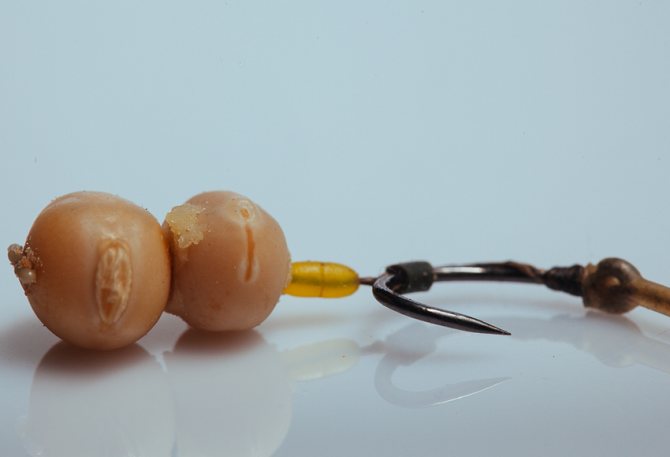
Fishermen who have extensive experience in catching carp or carp recommend the following methods of attaching (installing) peas:
- Hook outward (standard method) - boiled peas (from 1 to 4 pcs.) are placed on the hook sequentially, one after another, so that the metal sting is barely visible from the last one.
- Disguised hook - this method increases the number of bites, it can be considered the most catchy. The iron tip of the tackle is not visible outside, but is hidden in the center of the steamed pea.
- Sandwich - peas alternate with worms, corn or maggots. Larger fish bite on multilayer bait.
It doesn’t matter what method of attaching the bait the fish uses. In order to get a good result, it should be done every 20-30 minutes. (even without a bite) change the bait to fresh one.
Installation of peas
The main installation methods are:
- Standard. Take 1 or several peas (depending on their size) and place them on the hook so that its tip sticks out. The main thing is that all the peas are threaded through the hook.
- The sting is inside. With this option, the tip is located inside the pea. This is a complex method, but the most effective; it has been noted that carp bite faster this way.
- In several layers. Here, in addition to peas, it is allowed to put other components on the hook, for example, corn, maggots or earthworms. Interesting fact: this method of installation is easier to attract the attention of heavier fish.
If it is observed that during fishing the peas repeatedly slip off the hook, then it is more advisable to try replacing the mounting method with another. In any case, it is better to replace the peas with new ones after half an hour.
Technique for catching carp and carp using peas
The advantage of fishing with such bait is that small underwater inhabitants, such as roach, do not cope well with large bait and cannot swallow it. That is why the catch will consist of large specimens. Beans are most often used by fishermen from February to April inclusive, when hungry fish begin feeding intensively.
Also read about how to prepare bait for catching carp.
However, a person with a fishing rod should remember that carp and carp are very careful and consume food carefully and quickly. It often happens that after a successful bite, the prey comes off the hook within a few seconds. The trouble occurs because the fish does not swallow the peas greedily, but uses the tips of its mouth to hold it until it is swallowed.

If she feels the tip of the sting, she may not swallow the bait. Peas can be used throughout the fishing season, from early spring to late autumn. This bait is very effective on rivers with a current and in quiet lakes, where it is used as bait for carp, carp or chub.
How to catch fish with peas
In order for carp fishing with peas to be successful, you need to choose the right fishing spot. To do this, you need to study the creeks and holes in the reservoir. It will be important to know about the presence of currents, depth changes, and places with flooded trees.
You need to find out what gear is used for fishing and in which places the bite is more active. A clear indication that there is carp in the reservoir are splashes in the water. These are the places where carp look for food. A consequence of its activity may be cloudiness of the water at its feeding site.
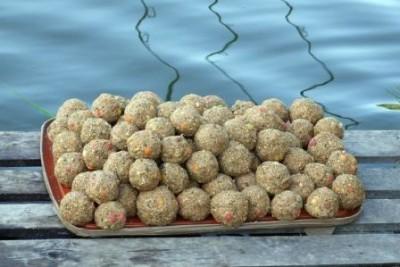
When planning a fishing trip for peas, you need to feed the fish. Feeding fish with pea bait is often carried out 2-3 days before the start of fishing.
The total weight of the bait should be significant. The carp must feed and stay in the future fishing area.
Peas are an effective means of feeding fish. You can make porridge from it or make dough, which can be thrown to the intended fishing spot.
You need to know that complementary foods should be crumbly and have a distinct pea smell. It is not recommended to throw a lot of bait in one place. It would be preferable for it to be spread out a little wider. This will increase the feeding area for fish and the space for throwing gear.
The choice of gear for catching carp with peas depends on the reservoir and fishing location.
The fishing depth, casting distance, and the presence or absence of underwater obstacles will determine which tackle to use: a donk or a fishing rod.
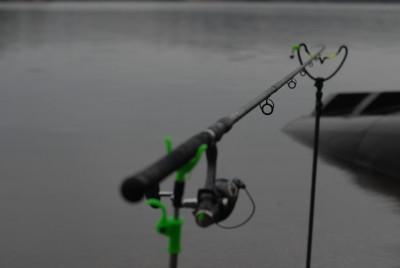
When fishing for carp with a donk, important characteristics are the casting range and the presence of a good, powerful reel. For such fishing, it is recommended to have a spinning rod 3-3.5 meters long.
It is advisable to install a spinning reel with a friction brake on the rod. The reel must have a baitrunner that will not allow the fish to drag the spinning rod away.
It is preferable that the fishing line be single-strand nylon, with a diameter of 0.3-0.35 mm. Usually hooks No. 6-8 are installed. You can put a monofilament line with a diameter of 0.2-0.25 mm on the leash.
If fishing is done with a fishing rod, it is recommended that its length be 4.5-5 meters. More often they use nylon, single-strand fishing line 0.22-0.3 mm and hooks No. 6-8. It is preferable to have a float with a heavy base and a large, high antenna. Often, fishermen tie hooks onto the main line, thus eliminating possible break points.
Fishing for carp with peas - Methods for planting peas
Catching carp with peas can be done either with a hook or with a hair bait. When fishing for carp on a hook, the peas must be planted whole. The pea must be placed on the hook through a small sprout, which is characterized by a separate color.
The tip of the hook must be inserted into the sprout so that it is located at the inner wall of the pea. If the sting is visible through the wall of the pea, then the hook is placed perfectly. Under no circumstances should the sting stick out. When pricked by a sting, the carp will throw the bait.
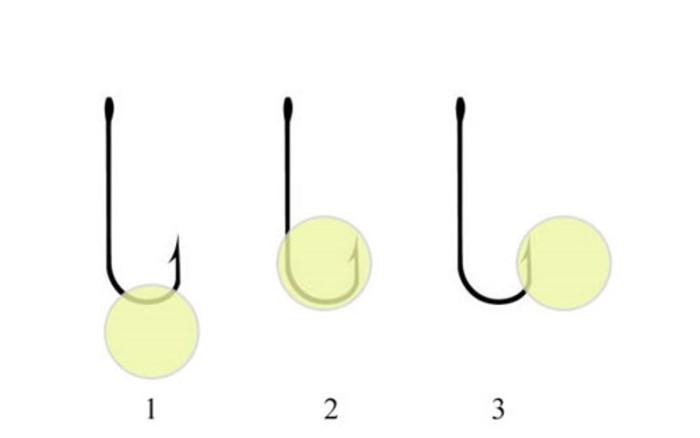
Methods for attaching peas to a hook
You can also catch carp using peas using a hair bait. It is equipped quite simply. You need to make a leash with a loop at the end, which is attached to the main fishing line near the hook. For the loop you need to have a small stopper so that the peas do not fly off after being placed on the leash.
Use a needle or small drill to make holes in the middle of the peas and place them on the leash. After inserting the peas, the loop must be stopped. You can install several peas on the nozzle.
Catching carp with peas - How to fish for carp
The carp bite is sharp and strong. He sniffs the peas first. This can be seen by the wobbling of the fishing rod's float or the slight trembling of the spinning rod's bell. You need to hook the carp from the bottom up. After you hook a carp, you need to fish it out correctly.

"Carp fishing with peas"
To do this, it is recommended to set the fishing rod or spinning rod in a vertical position. Do not make sudden movements and pull the fish out of the water. The carp must be brought out slowly, giving it time so that it gets tired of the fight. Slowly pull him up, taking away the space he gives up. Having pulled the carp to the shore, you can place a landing net under it.
When fishing, the carp must be stopped without giving it the opportunity to move away. Otherwise, it will go into the seaweed or snags and break the fishing line.
